The Marshall Star for January 31, 2024
Jan 31, 2024
The Marshall Star for January 31, 2024
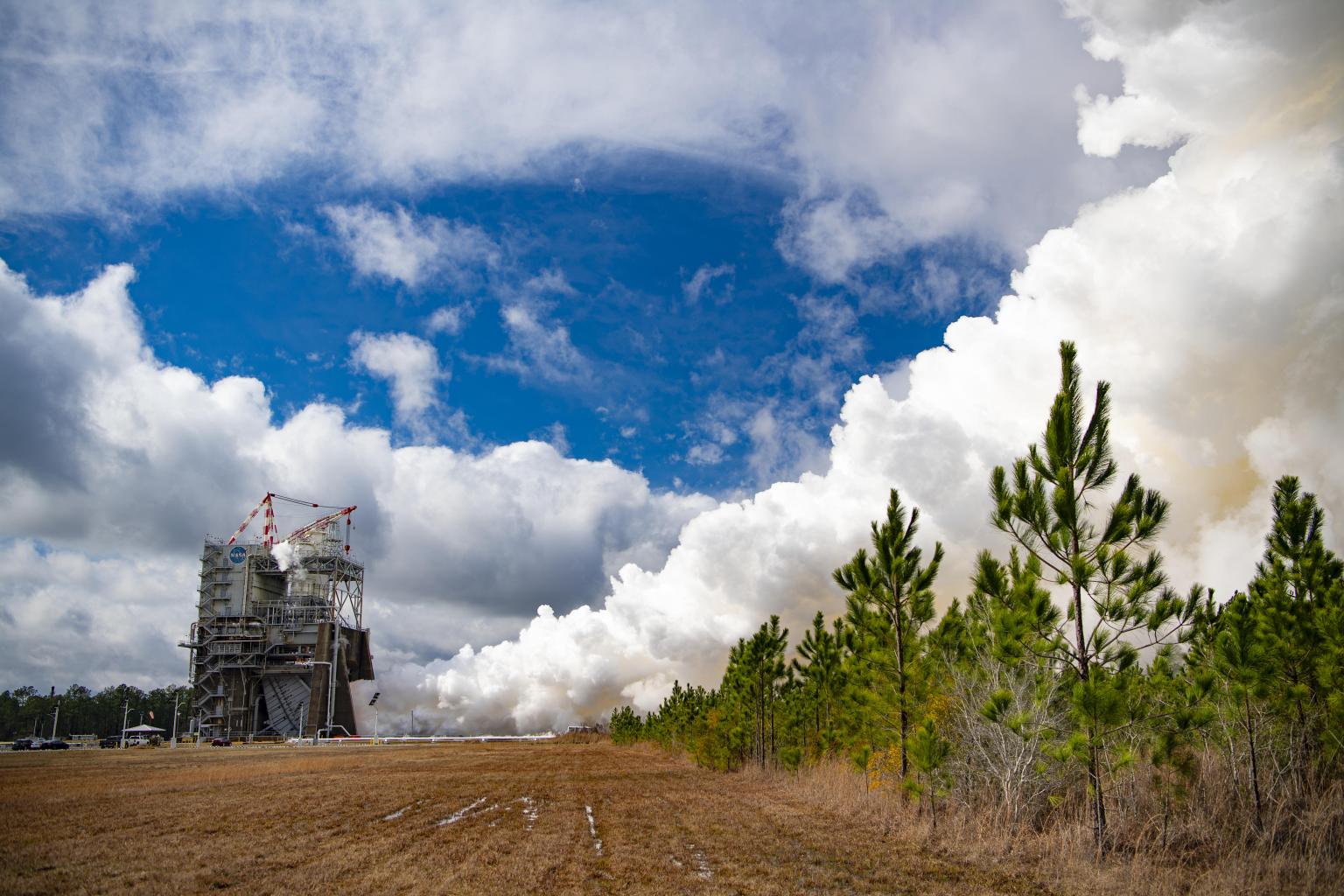
Marshall Commemorates NASA’s Day of Remembrance
By Celine Smith
Team members across NASA’s Marshall Space Flight Center congregated Jan. 25 in the lobby of Building 4221 to observe NASA’s Day of Remembrance.
Each January, the agency pauses to honor members of the NASA family who lost their lives while furthering the cause of exploration and discovery, including the crews of Apollo 1 and space shuttles Challenger and Columbia.
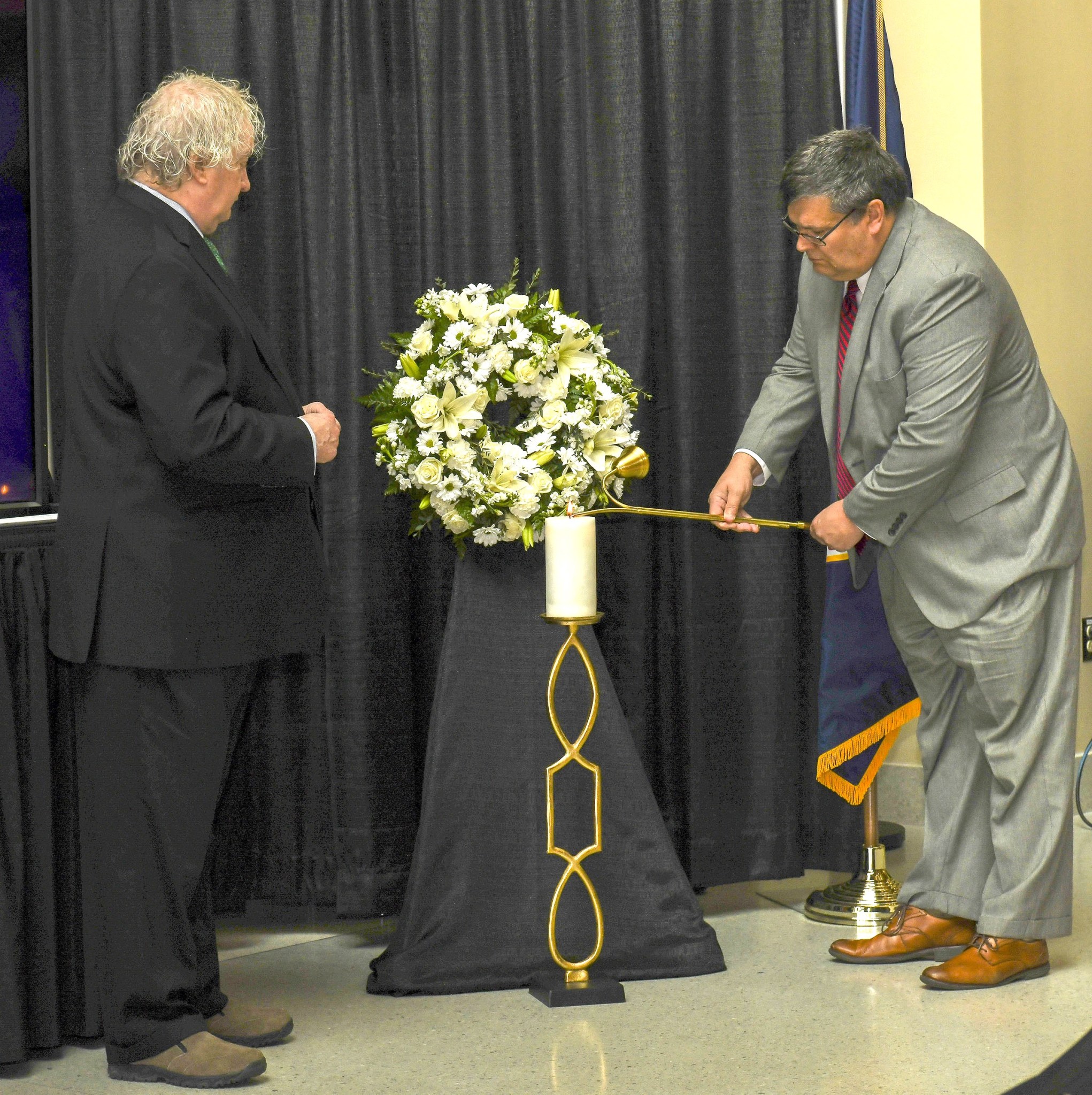
The center’s ceremony included speeches from Larry Leopard, Marshall associate director, technical, and Bill Hill, director of Marshall’s Safety and Mission Assurance Directorate.
Leopard spoke about his memories of Challenger and Columbia’s influence on his work ethic at Marshall.
“With every failure and loss, it is up to those who remain to learn and grow from those who have gone on before us to prevent the same mistakes as we push on to new heights,” Leopard said.
Hill emphasized the importance of how a strong safety culture at Marshall is vital to mission success. He also encouraged Marshall team members to attend center safety workshops and complete training to eliminate as much risk as possible on future missions.
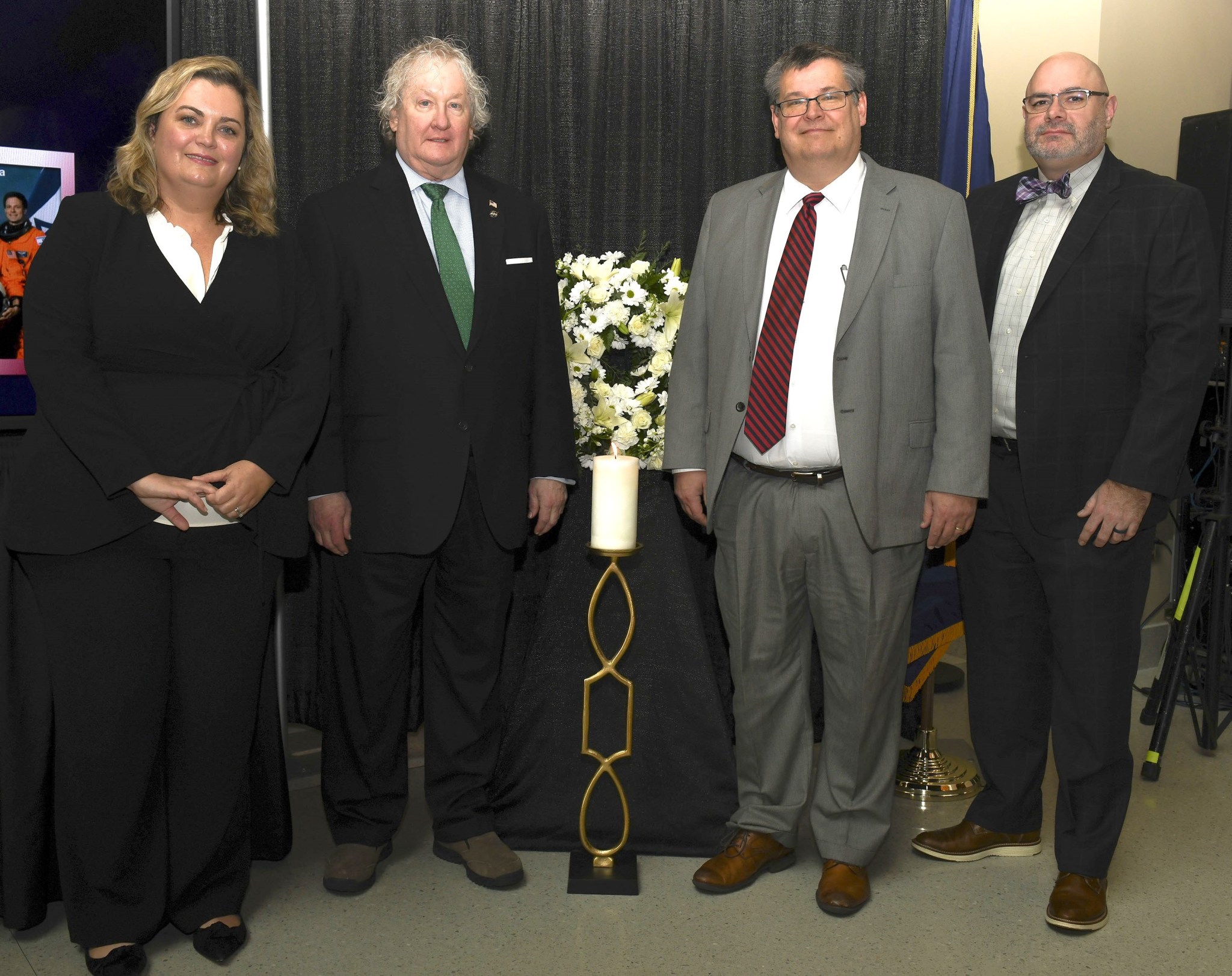
“Seventeen of our brave astronauts paid the ultimate price for our failures,” Hill said. “Learning from our experience, we must become more humble, more dedicated to doing things right, more vigilant, questioning the process at every turn.”
After their speeches, a candle was lit in memory of lives lost in the pursuit of exploration and discovery along with a moment of silence.
“The accidents we’ve had in the past are reminders of how hard, dangerous, and risky space exploration is,” acting Center Director Joseph Pelfrey said afterward. “They serve as a reminder for us to be diligent at our jobs. As we bring younger generations into the workforce, we have to continue to teach them as well so that as a community we don’t repeat these mistakes.”
Smith, a Media Fusion employee, supports the Marshall Office of Communications.
National Mentoring Month: Troubleshooting with NASA’s Aaron Comis and Brad Solomon
By Jessica Barnett
Mentorship is a valuable partnership that benefits both mentors and mentees. Like any relationship, it also comes with its fair share of challenges.
Those challenges can include misaligned expectations, miscommunications, time constraints, lack of engagement, and burnout. Overcoming those challenges is possible, but it takes commitment, communication, and flexibility from both parties.
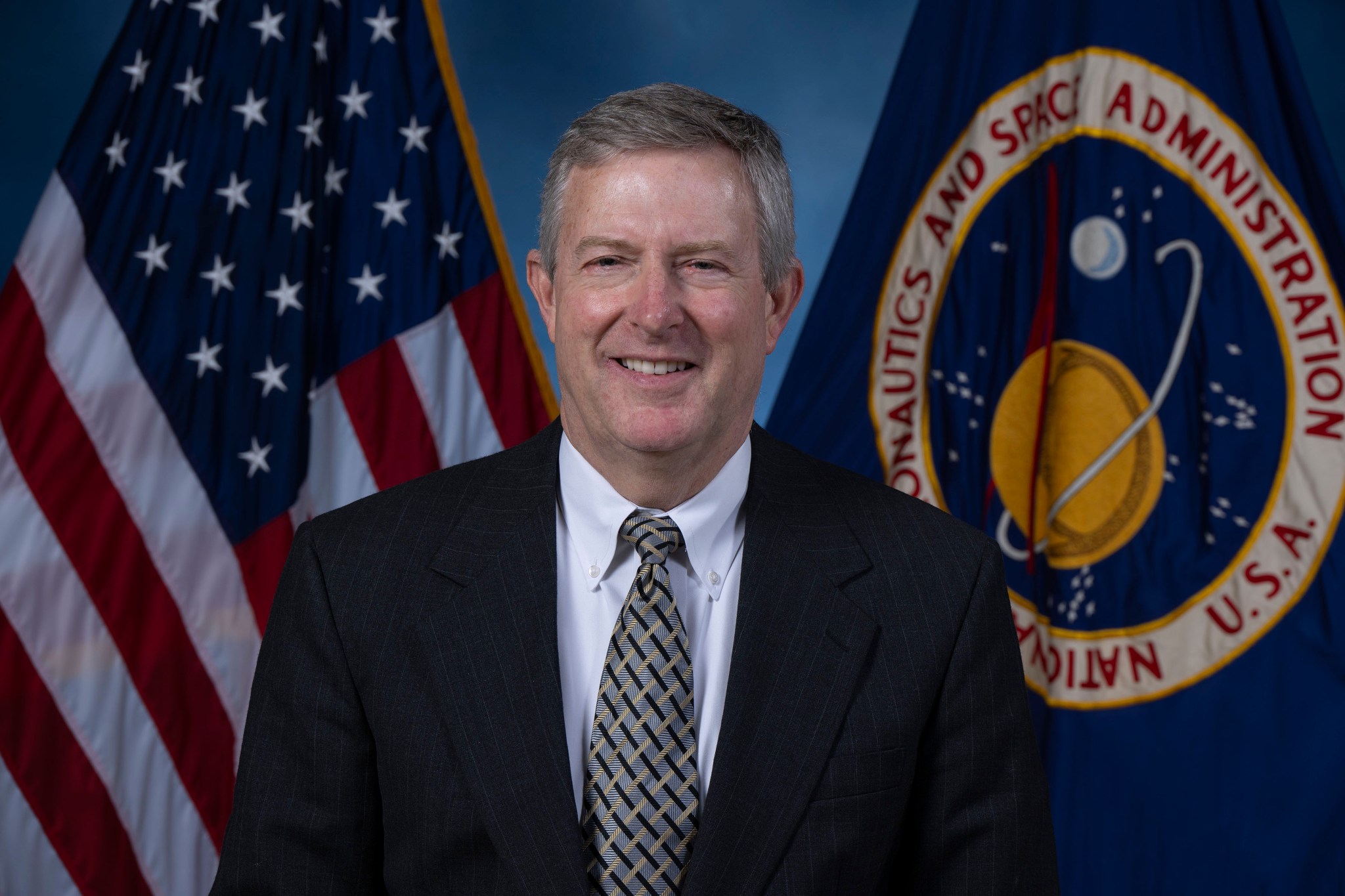
Those concepts are all too familiar to Brad Solomon and Aaron Comis, who were paired as mentor and mentee respectively. Solomon, who currently serves as chief information officer for NASA’s Marshall Space Flight Center, said he signed up for the systems engineering mentoring program and was purposefully paired with Comis, a former Pathways intern from Johnson Space Center who now works as chief digital engineer at Goddard Space Flight Center.
“We found we had more in common than we knew, as both of us were involved in the digital transformation initiative led by Jill Marlowe, and that our challenges at Marshall and Goddard in that effort were very common,” Solomon said.
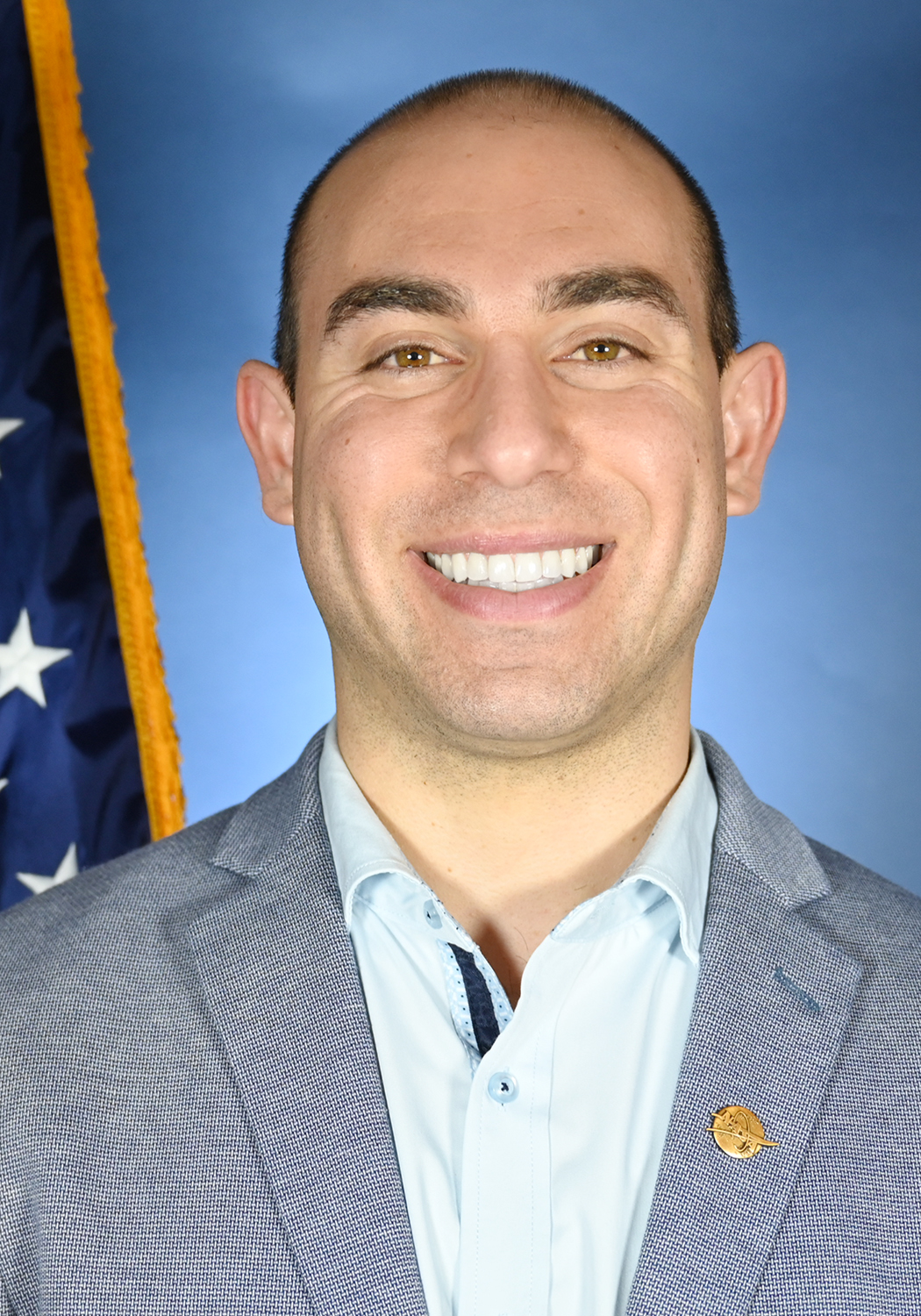
Being at different NASA centers meant the potential for additional challenges, but it also provided additional perspective and opportunities for the pair during their mentorship journey. As NASA wraps up its celebration of this year’s Mentoring Month, Comis and Solomon sat down to offer their insight into how mentorship has influenced their lives and careers, as well as their tips for helping things go right and their advice for when things go wrong.
Question: What does mentorship mean to you?
Comis: To me, mentorship is a judgment-free relationship between peers that provides a safe space to discuss life with a focus on relating conversation back to a specific topic, whether it be professional, educational, personal, etc. We all eat, sleep, win, lose, and face challenges. The only constant is everything relating back to life.
Solomon: As a mentor, it means inspiring and helping create the next generation of leaders who will carry on the NASA legacy. I was fortunate to be part of the construction of ISS (International Space Station) and the Space Shuttle Program support, but the days of major NASA programs at the heart of the NASA mission are largely over, given the growth of the commercial space sector. More than ever, we need an innovative workforce adept at modern engineering techniques. With over 700 new NASA employees at Marshall since the pandemic began, all of us should feel obligated to help launch their young careers.
Question: What impact has mentorship had on you and your career?
Comis: Mentors have played a huge, albeit unassuming, role throughout my career, as early as my time at Johnson Space Center as a Pathways intern. My mentors throughout the years have provided me with a safe space to ask questions that I wasn’t comfortable with asking publicly, supported me through hard times, and celebrated big wins with me. I honestly believe my career wouldn’t be as successful or fun without the many mentors who helped me along the way.
Solomon: We all can look back at our careers and see the handful of leaders and conversations that changed the trajectory and propelled our careers. I had the privilege of being part of a Boeing program in the early 1990s that provided excellent leadership training and the opportunity to hear from aerospace leaders. Jonathan Pettus and Neil Rodgers instilled project management discipline and tireless work ethics in the implementation of NASA’s first enterprise financial management systems. Being part of an enterprise IT source evaluation board gave me opportunities to work with leaders like Byron Butler and Walt Melton, who taught me how to read and appreciate precision in contracting. Without mentors like these, I would not have been prepared for promotion opportunities when they were presented.
Question: How do you handle potential conflicts or disagreements to ensure a constructive resolution?
Comis: My role at Goddard is focused on change management, which can be a challenging role. If I come across potential conflicts or disagreements, I start with self-evaluation and attempt to take a step back from the situation. Did I communicate my intended message clearly and effectively? Was it possible that the intended message wasn’t understood? If the topic was the issue, not the communication, then it helps to have trusted mentors from all walks of life. This way, there is a better chance of achieving a constructive resolution in some form. Geographic separation – for example, being at different NASA centers – also helps with discussing certain sensitive topics, since this provides an additional layer of privacy and protection for everyone and ensures objective mentorship.
Solomon: That’s such an important trait in an effective leader. First, never take any criticism or disagreement personally, even when it is delivered with animus. There are always reasons behind it, and it may not have anything to do with you. Second, set aside all emotion, and see the issue as a roadblock – first, to a successful personal relationship, then to the mission. You must address the lack of trust before you can solve the problem. Do not hesitate to insert humor and self-deprecation to reduce tension. That will make addressing trust and the issue at hand easier. Finally, always start a hard conversation by restating and affirming the validity of the other person’s position (seek first to understand). This way, you are at least on neutral ground to start the difficult conversation.
Question: How would you suggest a mentor or mentee address differing expectations?
Comis: Expectations are key to a successful mentorship and should be addressed during the very first mentor/mentee interaction, starting with, ‘Why do you want to be a mentor/mentee, and what do you hope to gain from this experience?’ This is something that I learned from my most recent formal mentorship experience that I intend on carrying forward with my future mentor/mentee relationships.
Solomon: All mentor/mentee initial meetings should start with a statement of expectations from the mentee. As mentor, do not critique the statement. Treat it as the starting point for the conversation. Mentors should listen, affirm, then add to the expectation with additional potential directions in which the discussions can go. Save additional guidance for future meetings. Instead, get to know each other. Where is the mentee in their career? What are their aspirations? Why? What do they enjoy doing outside of work? At the end of the meeting, set the mentoring agenda for the next meeting.
Question: What advice do you have for someone else who wants to find or be a mentor?
Comis: Take the plunge! Becoming a mentor or mentee can be challenging, since it involves opening yourself up, whether by asking for help or offering help to someone else’s real and ongoing challenges, but it’s also hugely rewarding. Of course, it’s important to get to know someone before unloading your problems onto them, but at a certain point, there’s only one way to continue to establish the relationship, and that’s through trust. Ideally, have multiple mentors throughout your career, some local and some who intentionally are not local. This way, for more sensitive issues, you have an added layer of separation for peace of mind. I’d recommend everyone look for someone you already trust (for a potential mentor) or someone you see or know of who might be struggling and offer a helping hand (as a potential mentor for them). You never know how additional perspective might help you overcome challenges you weren’t even aware you had!
Solomon: To the mentor: First, there is no wrong way to do this. Don’t worry about meeting an expectation. It’s best to just be yourself and be genuine. Be present in the discussions, not distracted. Reschedule if you have a scheduling conflict. It helps if there is an affinity between the mentor and mentee to begin with, so work needs to be done to effectively match the two. If you are not right for each other, terminate after the first session and take action to help find a better match. Take good notes. You might want to consider a separate notebook for the engagement, so you can look back on notes from the past session. Mentees are opening themselves to you, so be trustworthy. Remember the last conversation and bring it forward to the next one. Be willing to share about yourself as well.
To the mentee: Be honest and open. You get out only what you are willing to invest. This means you will be out of your comfort zone. Don’t worry; it’s supposed to feel uncomfortable at times. Don’t be afraid to ask questions or raise uncomfortable questions, because everyone has been at your point and gone through similar experiences in their careers. Know that your time will come when you will be the mentor – perhaps sooner than you expect.
Editor’s note: This is the third in a Marshall Star series during National Mentoring Month in January. Marshall team members can learn more about the benefits of mentoring on Inside Marshall.
Barnett, a Media Fusion employee, supports the Marshall Office of Communications.
Marshall Team Supports Space Night with the Huntsville Havoc
NASA’s Marshall Space Flight Center joined the Huntsville Havoc for Space Night. The sold-out Jan. 26 game featured more than 4,900 fans for a themed hockey game designed to celebrate Huntsville’s robust aerospace community.
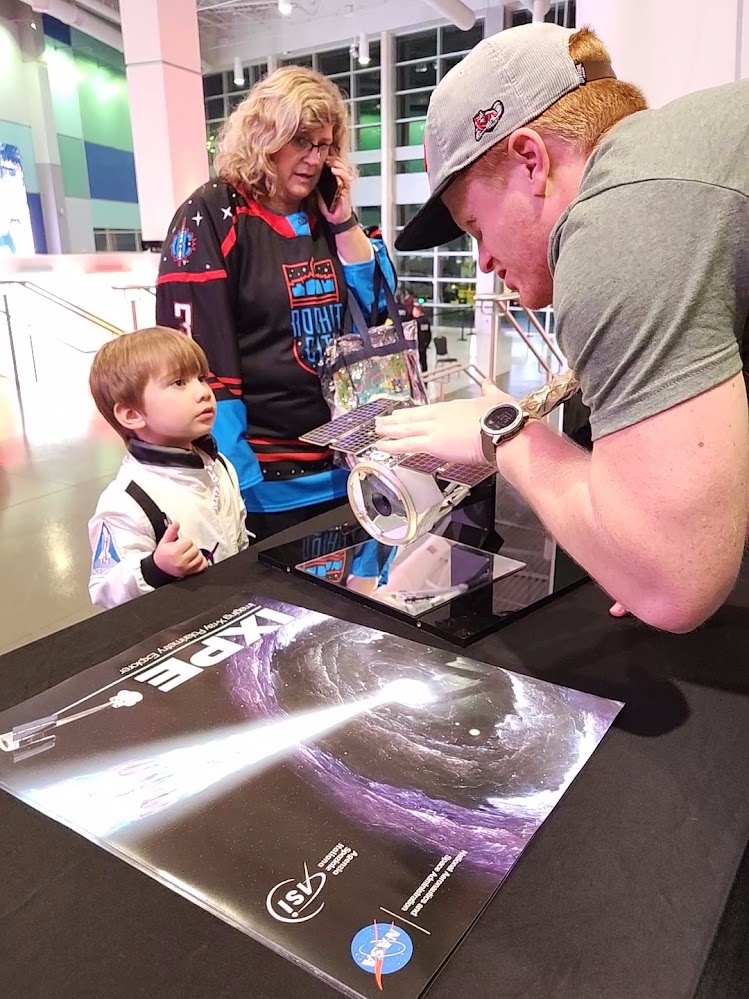
Thousands of space and hockey fans enjoyed exhibits and outreach provided by Marshall team members from across the center, including the Centennial Challenges Program; IXPE (Imaging X-ray Polarimetry Explorer); Technology Demonstration Missions; and SLS (Space Launch System) Program.
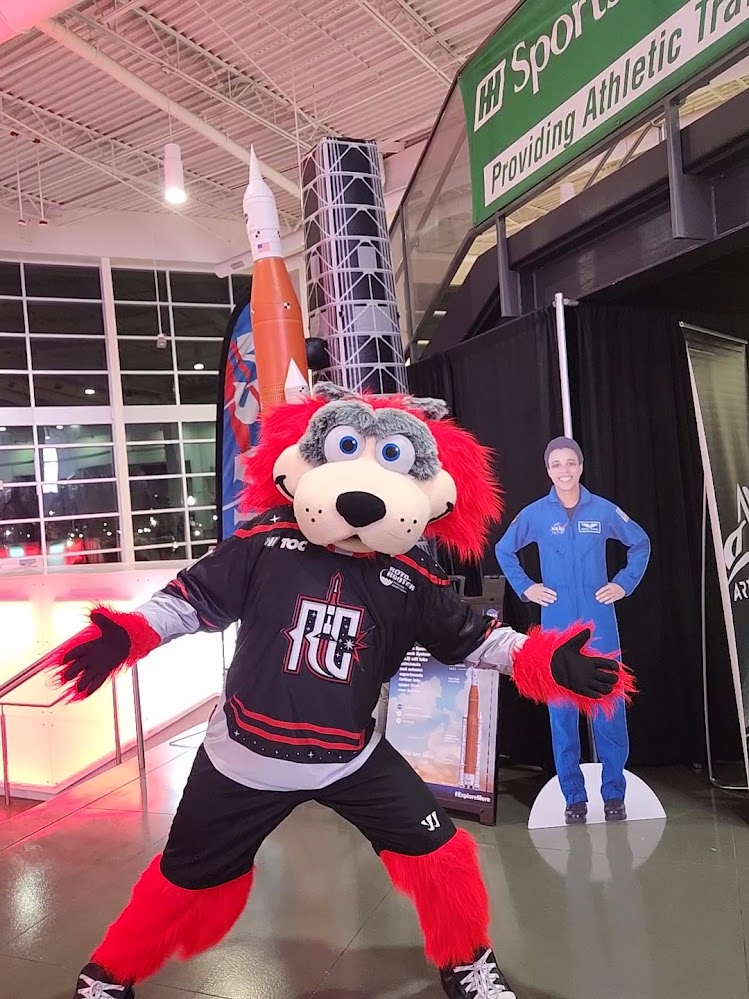
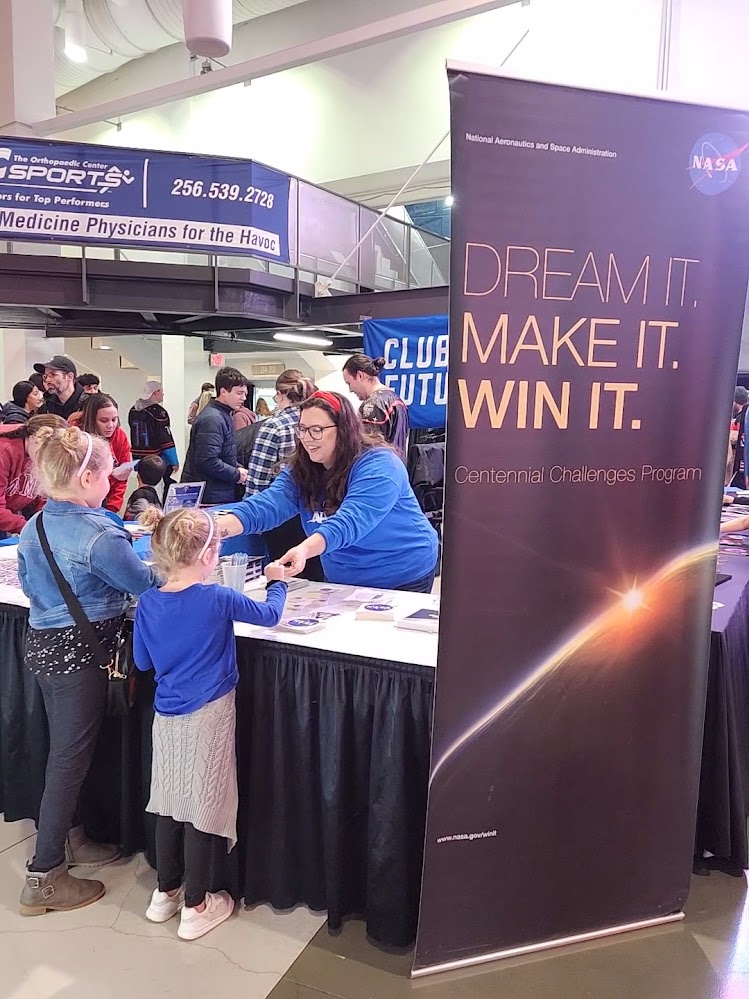
NASA Marks Halfway Point for Artemis Moon Rocket Engine Certification Series
NASA completed the sixth of 12 scheduled RS-25 engine certification tests in a critical series for future flights of the agency’s SLS (Space Launch System) rocket as engineers conducted a full-duration hot fire Jan. 27 at NASA’s Stennis Space Center.
The current series builds on previous hot fire testing conducted at NASA Stennis to help certify production of new RS-25 engines by lead contractor Aerojet Rocketdyne, an L3 Harris Technologies company. The new engines will help power NASA’s SLS rocket on future Artemis missions to the Moon and beyond, beginning with Artemis V.
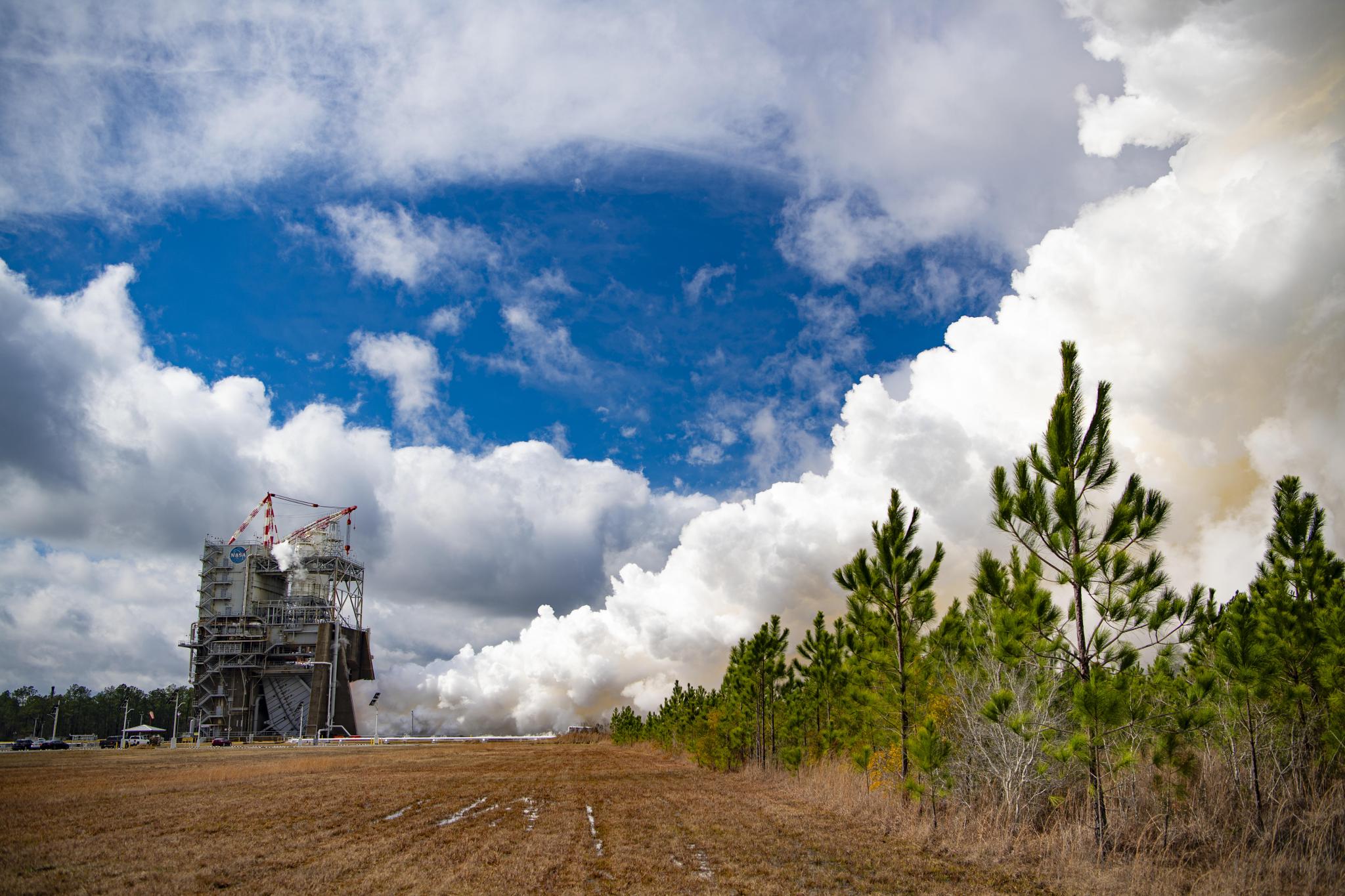
Operators fired the RS-25 engine on the Fred Haise Test Stand for almost eight-and-a-half minutes (500 seconds) – the same amount of time needed to help launch SLS – and at power levels ranging between 80% to 113%. New RS-25 engines will power up to the 111% level to provide additional thrust for launch of SLS. Testing up to the 113% power level provides a margin of operational safety.
Now at the halfway point in the series, teams will install a new certification nozzle on the engine. Installation of the new nozzle will allow engineers to gather additional performance data from a second production unit. Following installation next month, testing will resume at Stennis with six additional hot fires scheduled through March.
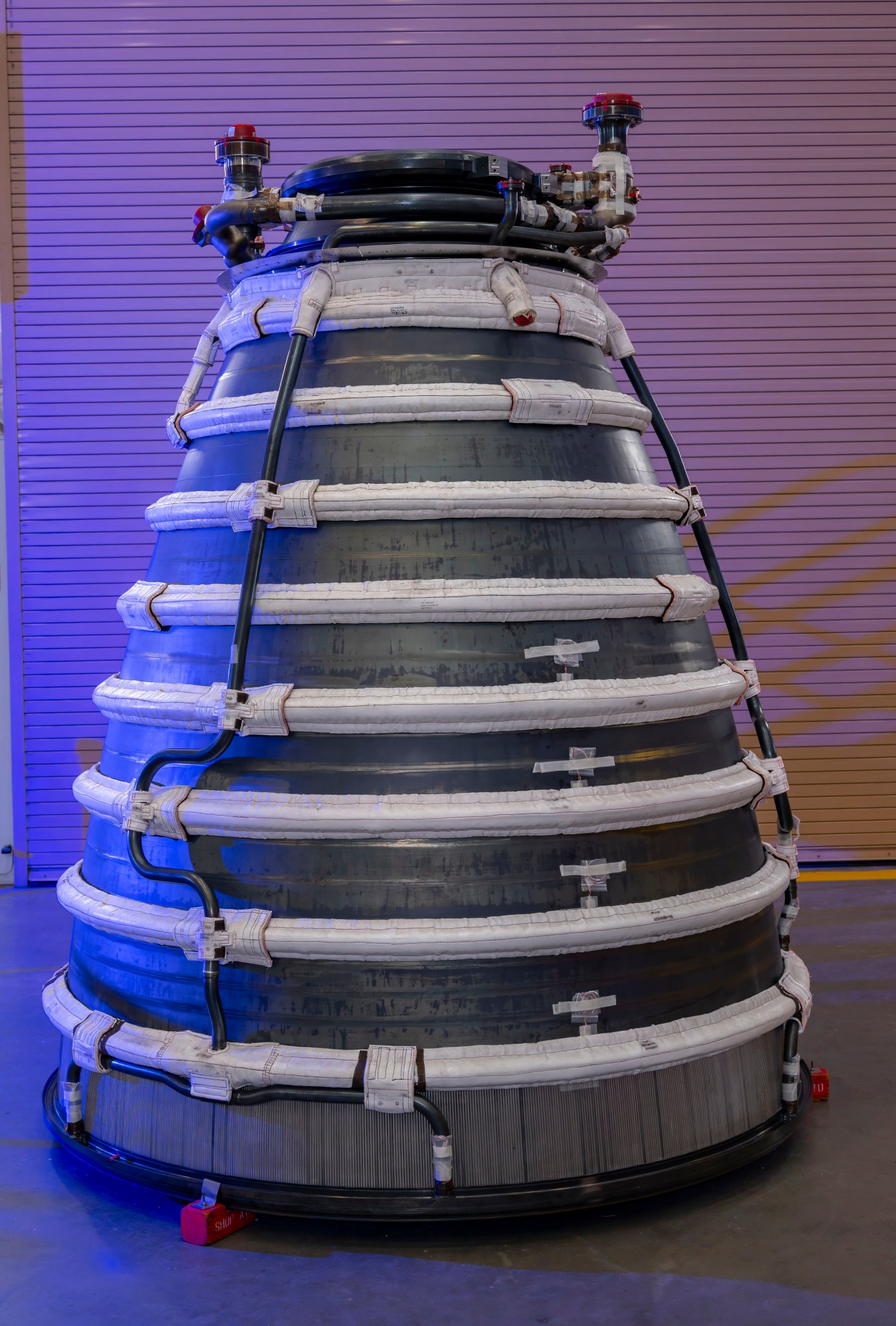
For each Artemis mission, four RS-25 engines, along with a pair of solid rocket boosters, power the SLS to produce more than 8.8 million pounds of thrust at liftoff. Under NASA’s Artemis campaign, the agency will establish the foundation for long-term scientific exploration at the Moon, land the first woman, first person of color, and its first international partner astronaut on the lunar surface, and prepare for human expeditions to Mars for the benefit of all.
NASA’s Marshall Space Flight Center manages the SLS Program.
Cygnus Lifts Off Atop SpaceX Rocket to Deliver Station Cargo
A fresh supply of more than 8,200 pounds of scientific investigations and cargo is on its way to the International Space Station on a Northrop Grumman Cygnus resupply spacecraft after launching on a SpaceX Falcon 9 rocket at 11:07 a.m. CST Jan. 30 from Space Launch Complex 40 at Cape Canaveral Space Force Station.
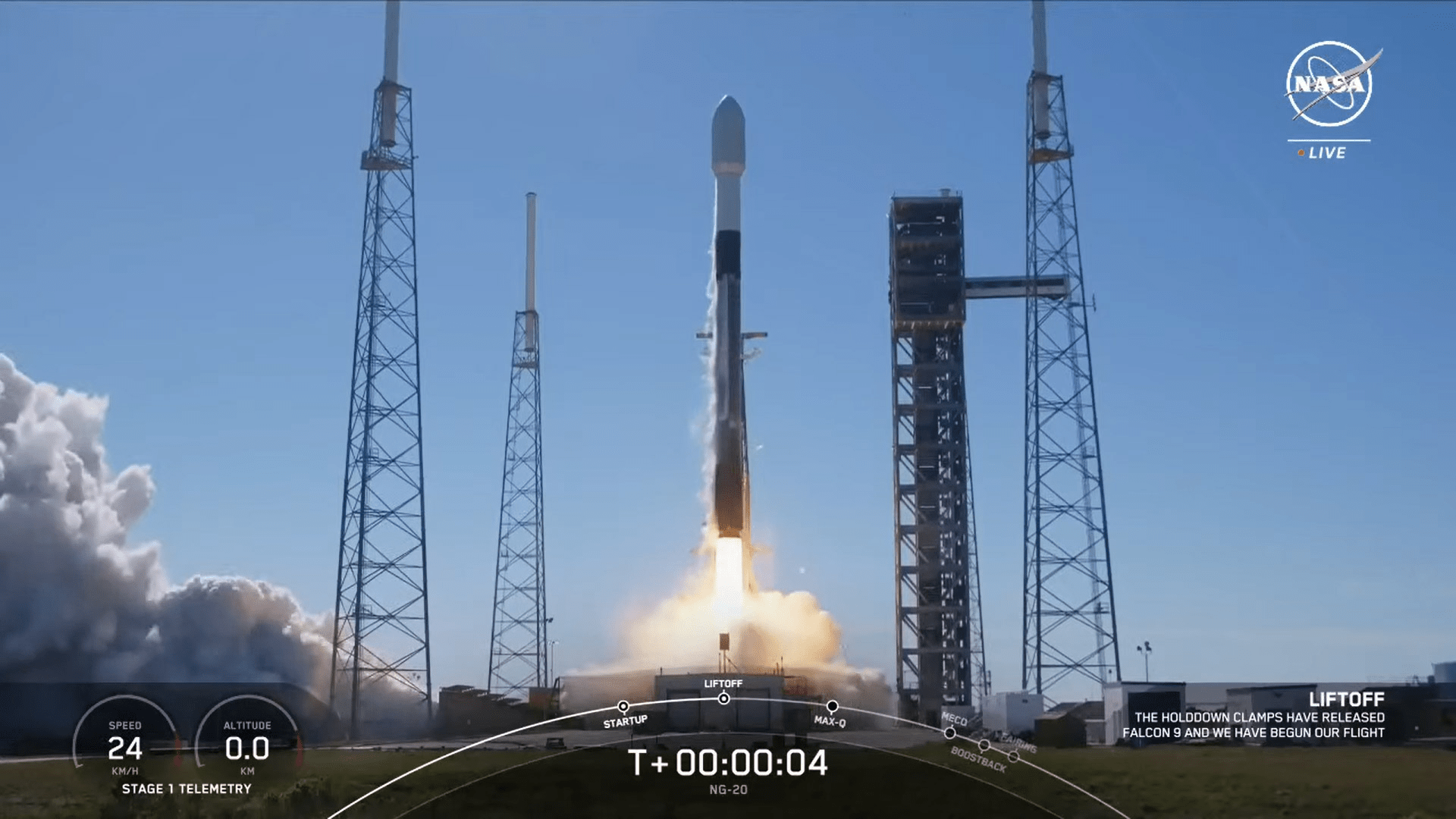
Cygnus has successfully deployed its two solar arrays and is scheduled to arrive at the space station around 3:15 a.m. Feb. 1. NASA+, NASA Television, the NASA app, and agency’s website will provide live coverage of the spacecraft’s approach and arrival beginning at 1:45 a.m.
NASA astronaut Jasmin Moghbeli will capture Cygnus using the station’s Canadarm2 robotic arm, and NASA astronaut Loral O’Hara will be acting as a backup. After capture, the spacecraft will be installed on the Unity module’s Earth-facing port.
This is Northrop Grumman’s 20th contracted resupply mission for NASA.
The Payload Operations Integration Center at NASA’s Marshall Space Flight Center operates, plans, and coordinates the science experiments onboard the space station 365 days a year, 24 hours a day.
Learn more about station activities by following the space station blog.
NASA Space Tech Spinoffs Benefit Earth Medicine, Moon to Mars Tools
As NASA innovates for the benefit of all, what the agency develops for exploration has the potential to evolve into other technologies with broader use here on Earth. Many of those examples are highlighted in NASA’s annual Spinoff book including dozens of NASA-enabled medical innovations, as well other advancements.
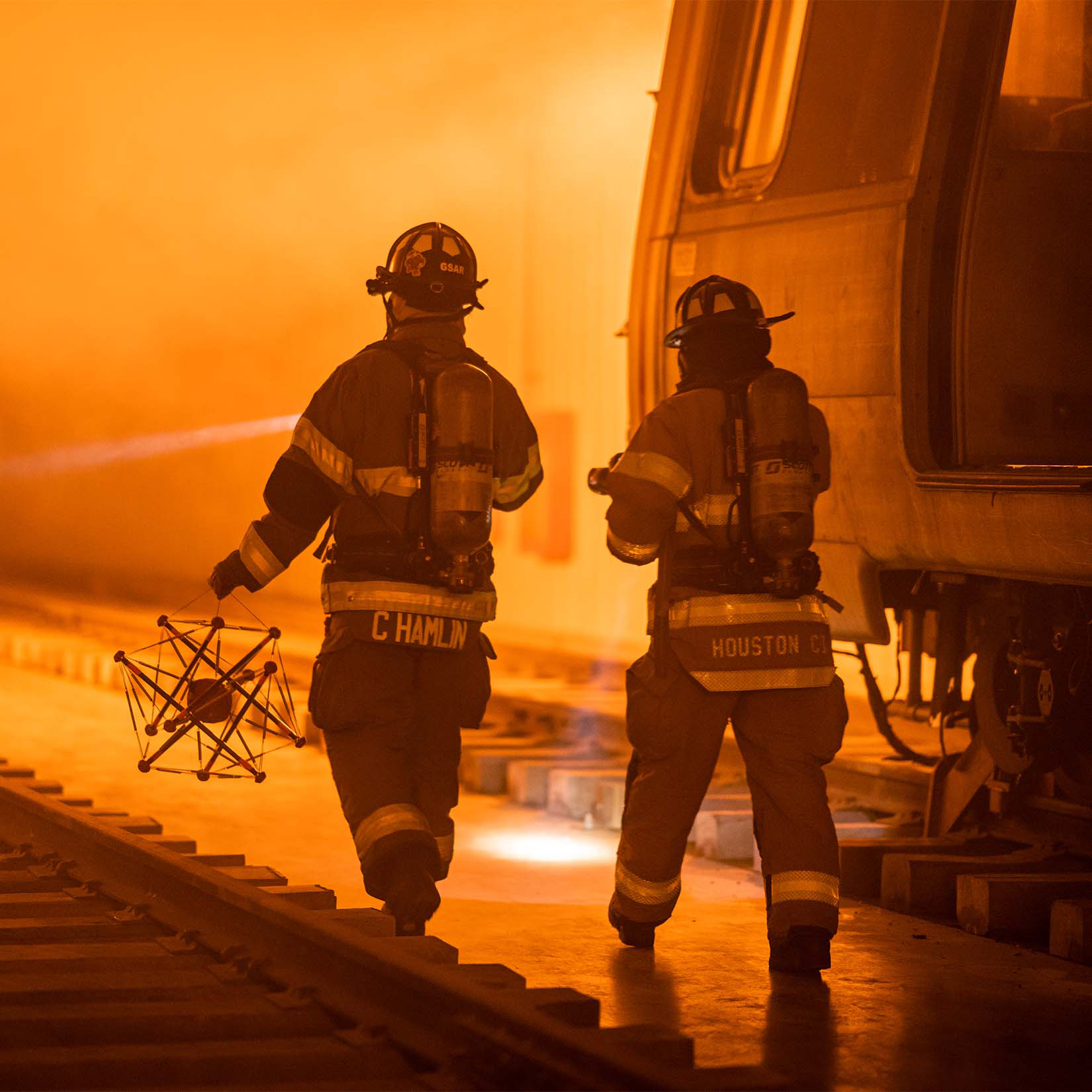
This year’s publication, NASA’s 2024 Spinoff, features several commercialized technologies using the agency’s research and development expertise to impact everyday lives, including:
- Spherical “squishy” robots capable of dropping into dangerous situations before first responders enter
- “Digital winglets” aircraft-routing technology that’s enabling increased fuel efficiency and smoother flights
- Lighter, more durable disc brake designs that produce less dust than traditional disc brakes
- Computer software to help businesses and communities cope with and recover from natural disasters like wildfires
- New 3D printing methods to additively manufacture rocket engines and other large aluminum parts
“As we continue to push new frontiers and do the unimaginable, NASA’s scientists and engineers are constantly innovating and advancing technologies,” said NASA Administrator Bill Nelson. “A critical part of our mission is to quickly get those advances into the hands of companies and entrepreneurs who can use them to grow their businesses, open new markets, boost the economy, and raise the quality of life for everyone.”
The medical innovations include the first wireless arthroscope – a small tube carrying a camera inserted into the body during surgery – to receive clearance from the U.S. Food and Drug Administration, which benefited from NASA’s experience with spacesuits and satellite batteries. Technologies for diagnosing illnesses like the coronavirus, hepatitis, and cancer have also stemmed from NASA’s space exploration and science endeavors. Even certain types of toothpaste originated from the agency’s efforts to grow crystals for electronics.
Additional 2024 Spinoff highlights include developments under NASA’s Artemis campaign, like a small, rugged video camera used to improve aircraft safety and a new method for detecting defects or damage in composite materials. Meanwhile, another Spinoff story details the latest benefits of fuel cell technology created more than 50 years ago for Apollo, which is now poised to support terrestrial power grids based on renewable energy.
The book also features several technologies NASA has identified as promising future spinoffs and information on how to license agency tech. Since the 1970s, thousands of NASA technologies have found their way into many scientific and technical disciplines, impacting nearly every American industry.
“As NASA’s longest continuously running program, we continue to increase the number of technologies we license year-over-year while streamlining the development path from the government to the commercial sector,” said Daniel Lockney, Technology Transfer program executive at NASA Headquarters. “These commercialization success stories continually prove the benefits of transitioning agency technologies into private hands, where the real impacts are made.”
Spinoffs are part of NASA’s Space Technology Mission Directorate and its Technology Transfer program. Tech Transfer is charged with finding broad, innovative applications for NASA-developed technology through partnerships and licensing agreements, ensuring agency investments benefit the nation and the world.
Read the latest issue of Spinoff.
Webb Depicts Staggering Structure in 19 Nearby Spiral Galaxies
It’s oh-so-easy to be absolutely mesmerized by these spiral galaxies. Follow their clearly defined arms, which are brimming with stars, to their centers, where there may be old star clusters and – sometimes – active supermassive black holes. Only NASA’s James Webb Space Telescope can deliver highly detailed scenes of nearby galaxies in a combination of near- and mid-infrared light – and a set of these images was publicly released Jan. 29.
These Webb images are part of a large, long-standing project, the Physics at High Angular resolution in Nearby GalaxieS, or PHANGS, program, which is supported by more than 150 astronomers worldwide. Before Webb took these images, PHANGS was already brimming with data from NASA’s Hubble Space Telescope, the Very Large Telescope’s Multi-Unit Spectroscopic Explorer, and the Atacama Large Millimeter/submillimeter Array. These included observations in ultraviolet, visible, and radio light. Webb’s near- and mid-infrared contributions have provided several new puzzle pieces.
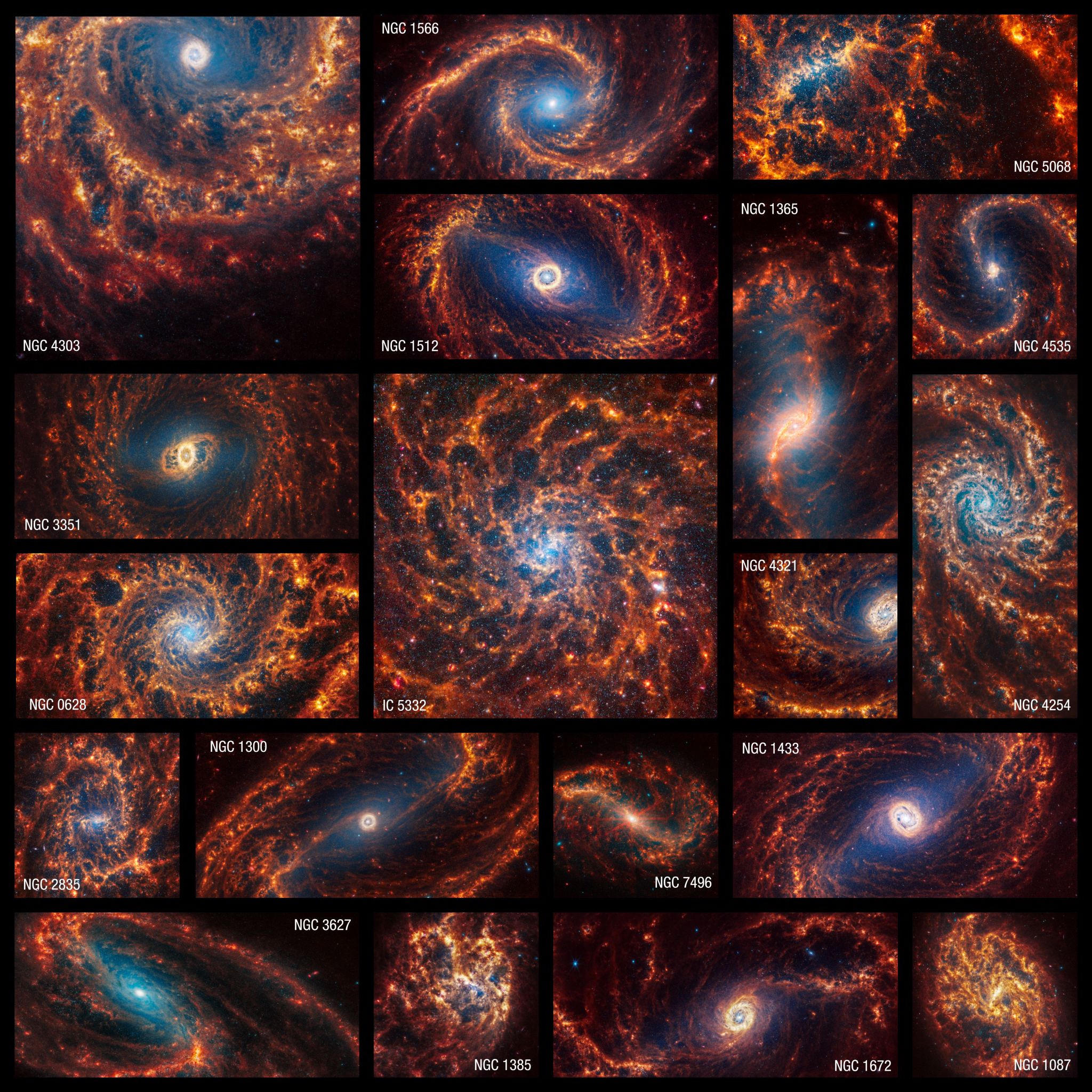
“Webb’s new images are extraordinary,” said Janice Lee, a project scientist for strategic initiatives at the Space Telescope Science Institute in Baltimore. “They’re mind-blowing even for researchers who have studied these same galaxies for decades. Bubbles and filaments are resolved down to the smallest scales ever observed, and tell a story about the star formation cycle.”
Excitement rapidly spread throughout the team as the Webb images flooded in. “I feel like our team lives in a constant state of being overwhelmed – in a positive way – by the amount of detail in these images,” added Thomas Williams, a postdoctoral researcher at the University of Oxford in the United Kingdom.
Webb’s NIRCam (Near-Infrared Camera) captured millions of stars in these images, which sparkle in blue tones. Some stars are spread throughout the spiral arms, but others are clumped tightly together in star clusters.
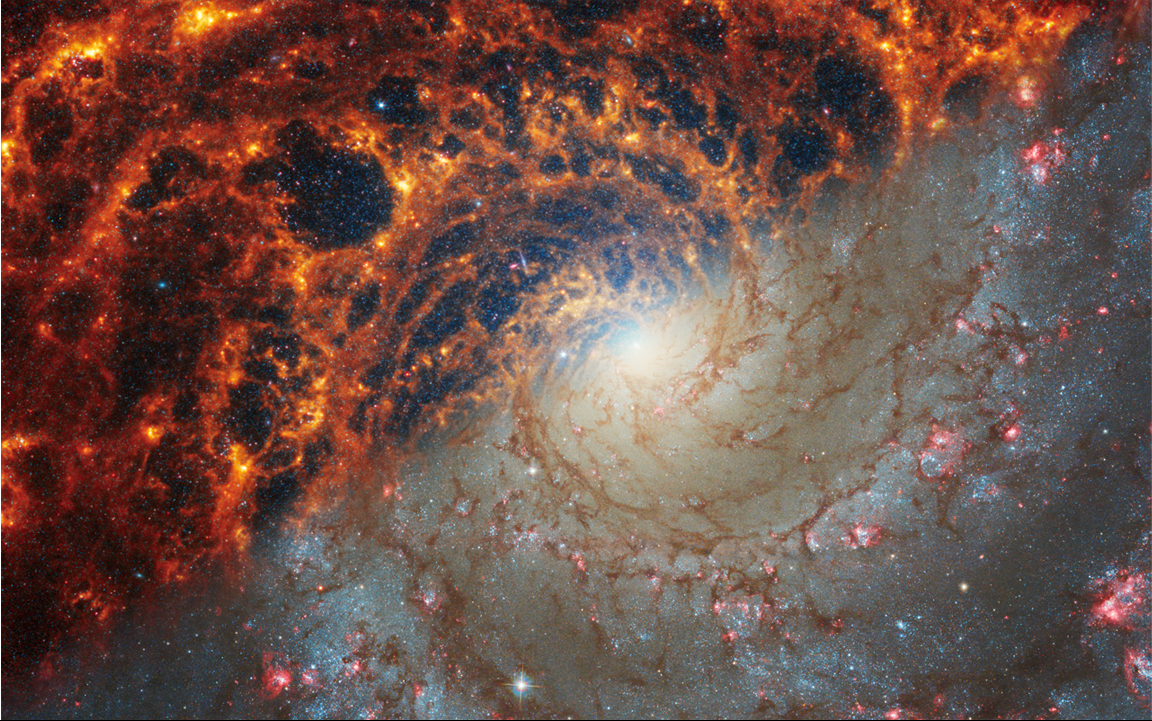
The telescope’s MIRI (Mid-Infrared Instrument) data highlights glowing dust, showing us where it exists around and between stars. It also spotlights stars that haven’t yet fully formed – they are still encased in the gas and dust that feed their growth, like bright red seeds at the tips of dusty peaks. “These are where we can find the newest, most massive stars in the galaxies,” said Erik Rosolowsky, a professor of physics at the University of Alberta in Edmonton, Canada.
Something else that amazed astronomers? Webb’s images show large, spherical shells in the gas and dust. “These holes may have been created by one or more stars that exploded, carving out giant holes in the interstellar material,” explained Adam Leroy, a professor of astronomy at the Ohio State University in Columbus.
Now, trace the spiral arms to find extended regions of gas that appear red and orange. “These structures tend to follow the same pattern in certain parts of the galaxies,” Rosolowsky added. “We think of these like waves, and their spacing tells us a lot about how a galaxy distributes its gas and dust.” Study of these structures will provide key insights about how galaxies build, maintain, and shut off star formation.
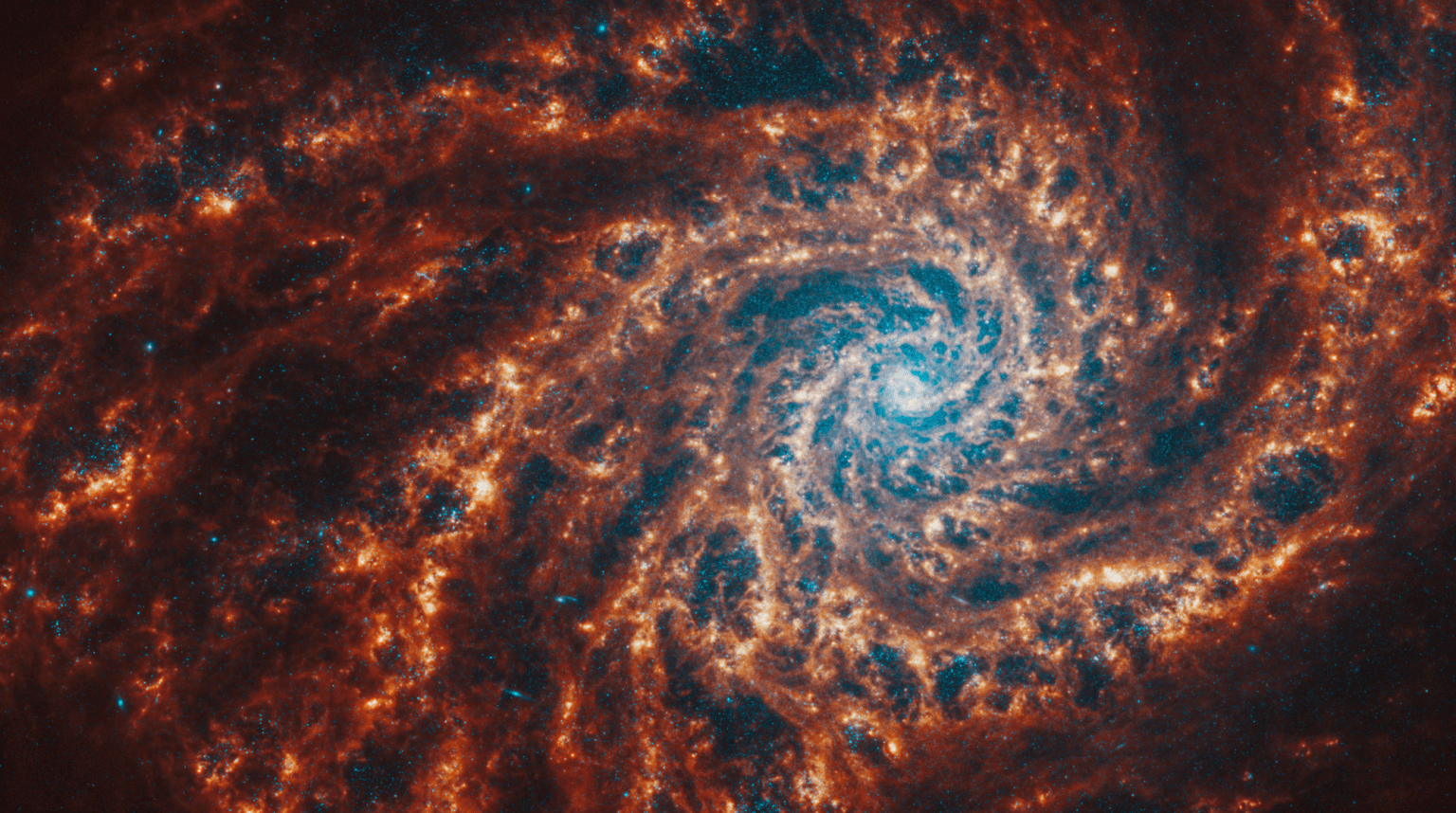
Evidence shows that galaxies grow from inside out – star formation begins at galaxies’ cores and spreads along their arms, spiraling away from the center. The farther a star is from the galaxy’s core, the more likely it is to be younger. In contrast, the areas near the cores that look lit by a blue spotlight are populations of older stars.
What about galaxy cores that are awash in pink-and-red diffraction spikes? “That’s a clear sign that there may be an active supermassive black hole,” said Eva Schinnerer, a staff scientist at the Max Planck Institute for Astronomy in Heidelberg, Germany. “Or, the star clusters toward the center are so bright that they have saturated that area of the image.”
There are many avenues of research that scientists can begin to pursue with the combined PHANGS data, but the unprecedented number of stars Webb resolved are a great place to begin. “Stars can live for billions or trillions of years,” Leroy said. “By precisely cataloging all types of stars, we can build a more reliable, holistic view of their life cycles.”
In addition to immediately releasing these images, the PHANGS team has also released the largest catalog to date of roughly 100,000 star clusters. “The amount of analysis that can be done with these images is vastly larger than anything our team could possibly handle,” Rosolowsky emphasized. “We’re excited to support the community so all researchers can contribute.”
See the full set of 19 images from both Webb and Hubble.
The James Webb Space Telescope is the world’s premier space science observatory. Webb is solving mysteries in our solar system, looking beyond to distant worlds around other stars, and probing the mysterious structures and origins of our universe and our place in it. Webb is an international program led by NASA with its partners, ESA (European Space Agency) and the Canadian Space Agency. Several NASA centers contributed to the project, including NASA’s Marshall Space Flight Center.
Poised for Science: NASA’s Europa Clipper Instruments are All Aboard
With less than nine months remaining in the countdown to launch, NASA’s Europa Clipper mission has passed a major milestone: Its science instruments have been added to the massive spacecraft, which is being assembled at the agency’s JPL (Jet Propulsion Laboratory).
Set to launch from NASA’s Kennedy Space Center in October, the spacecraft will head to Jupiter’s ice-encased moon Europa, where a salty ocean beneath the frozen surface may hold conditions suitable for life. Europa Clipper won’t be landing; rather, after arriving at the Jupiter system in 2030, the spacecraft will orbit Jupiter for four years, performing 49 flybys of Europa and using its powerful suite of nine science instruments to investigate the moon’s potential as a habitable environment.
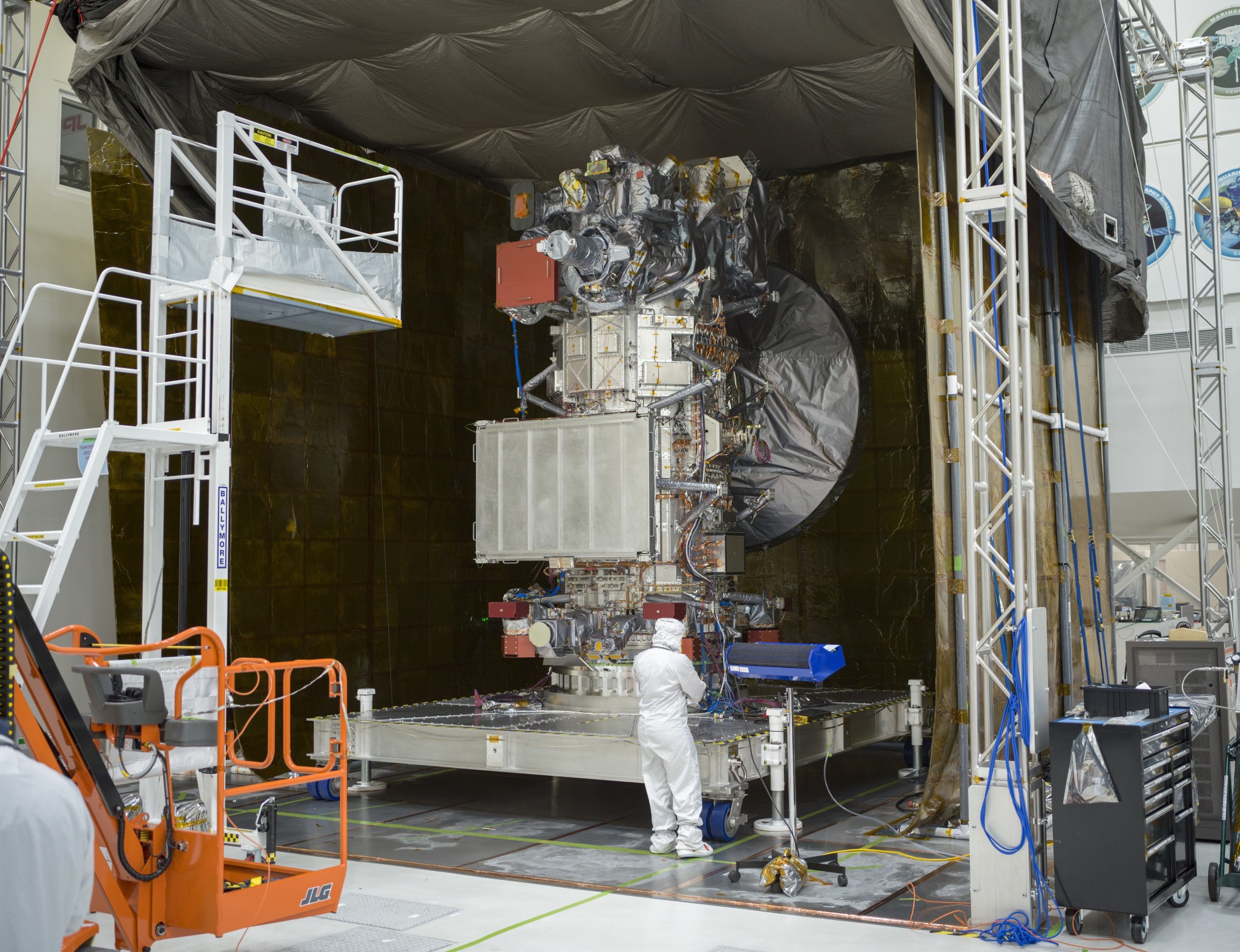
“The instruments work together hand in hand to answer our most pressing questions about Europa,” said JPL’s Robert Pappalardo, the mission’s project scientist. “We will learn what makes Europa tick, from its core and rocky interior to its ocean and ice shell to its very thin atmosphere and the surrounding space environment.”
The hallmark of Europa Clipper’s science investigation is how all of the instruments will work in sync while collecting data to accomplish the mission’s science objectives. During each flyby, the fully array of instruments will gather measurements and images that will be layered together to paint the full picture of Europa.
“The science is better if we obtain the observations at the same time,” Pappalardo said. “What we’re striving for is integration, so that at any point we are using all the instruments to study Europa at once and there is no need to have to trade off among them.”
By studying the environment around Europa, scientists will learn more about the moon’s interior. The spacecraft carries a magnetometer to measure the magnetic field around the moon. That data will be key to understanding the ocean, because the field is created, or induced, by the electrical conductivity of the ocean’s saltwater as Europa moves through Jupiter’s strong magnetic field. Working in tandem with the magnetometer is an instrument that will analyze the plasma (charged particles) around Europa, which can distort magnetic fields. Together, they’ll ensure the most accurate measurements possible.
What the mission discovers about Europa’s atmosphere will also lend insights into the moon’s surface and interior. While the atmosphere is faint, with only 100 billionth the pressure of Earth’s atmosphere, scientists expect that it holds a trove of clues about the moon. They have evidence from space- and ground-based telescopes that there may be plumes of water vapor venting from beneath the moon’s surface, and observations from past missions suggest that ice and dust particles are being ejected into space by micrometeorite impacts.
Three instruments will help investigate the atmosphere and its associated particles: A mass spectrometer will analyze gases, a surface dust analyzer will examine dust, and a spectrograph will collect ultraviolet light to search for plumes and identify how the properties of the dynamic atmosphere change over time.
All the while, Europa Clipper’s cameras will be taking wide- and narrow-angle pictures of the surface, providing the first high-resolution global map of Europa. Stereoscopic, color images will reveal any changes in the surface from geologic activity. A separate imager that measures temperatures will help scientists identify warmer regions where water or recent ice deposits may be near the surface.
An imaging spectrometer will map the ices, salts, and organic molecules on the moon’s surface. The sophisticated set of imagers will also support the full instrument suite by collecting visuals that will provide context for the set of data collected.
Of course, scientists also need a better understanding of the ice shell itself. Estimated to be about 10 to 15 miles thick, this outer casing may be geologically active, which could result in the fracture patterns that are visible at the surface. Using the radar instrument, the mission will study the ice shell, including searching for water within and beneath it. (The instrument’s electronics are now aboard the spacecraft, while its antennas will be mounted to the spacecraft’s solar arrays at Kennedy later this year.)
Finally, there’s Europa’s interior structure. To learn more about it, scientists will measure the moon’s gravitational field at various points in its orbit around Jupiter. Observing how signals transmitted from the spacecraft are tugged on by Europa’s gravity can tell the team more about the moon’s interior. Scientists will use the spacecraft’s telecommunications equipment for this science investigation.
With all nine instruments and the telecommunications system aboard the spacecraft, the mission team has begun testing the complete spacecraft for the first time. Once Europa Clipper is fully tested, the team will ship the craft to Kennedy in preparation for launch on a SpaceX Falcon Heavy rocket.
Europa Clipper’s main science goal is to determine whether there are places below Jupiter’s icy moon, Europa, that could support life. The mission’s three main science objectives are to determine the thickness of the moon’s icy shell and its surface interactions with the ocean below, to investigate its composition, and to characterize its geology. The mission’s detailed exploration of Europa will help scientists better understand the astrobiological potential for habitable worlds beyond our planet.
Managed by Caltech in Pasadena, California, NASA’s JPL leads the development of the Europa Clipper mission in partnership with the Johns Hopkins Applied Physics Laboratory (APL) in Laurel, Maryland, for NASA’s Science Mission Directorate. APL designed the main spacecraft body in collaboration with JPL and NASA’s Goddard Space Flight Center. The Planetary Missions Program Office at NASA’s Marshall Space Flight Center executes program management of the Europa Clipper mission.
Hubble Observes a Galactic Distortion
The galaxy NGC 5427 shines in a new NASA Hubble Space Telescope image. It’s part of the galaxy pair Arp 271, and its companion NGC 5426 is located below this galaxy and outside of this image’s frame. However, the effects of the pair’s gravitational attraction is visible in the galactic distortion and cosmic bridge of stars seen in the lower-right region of the image.
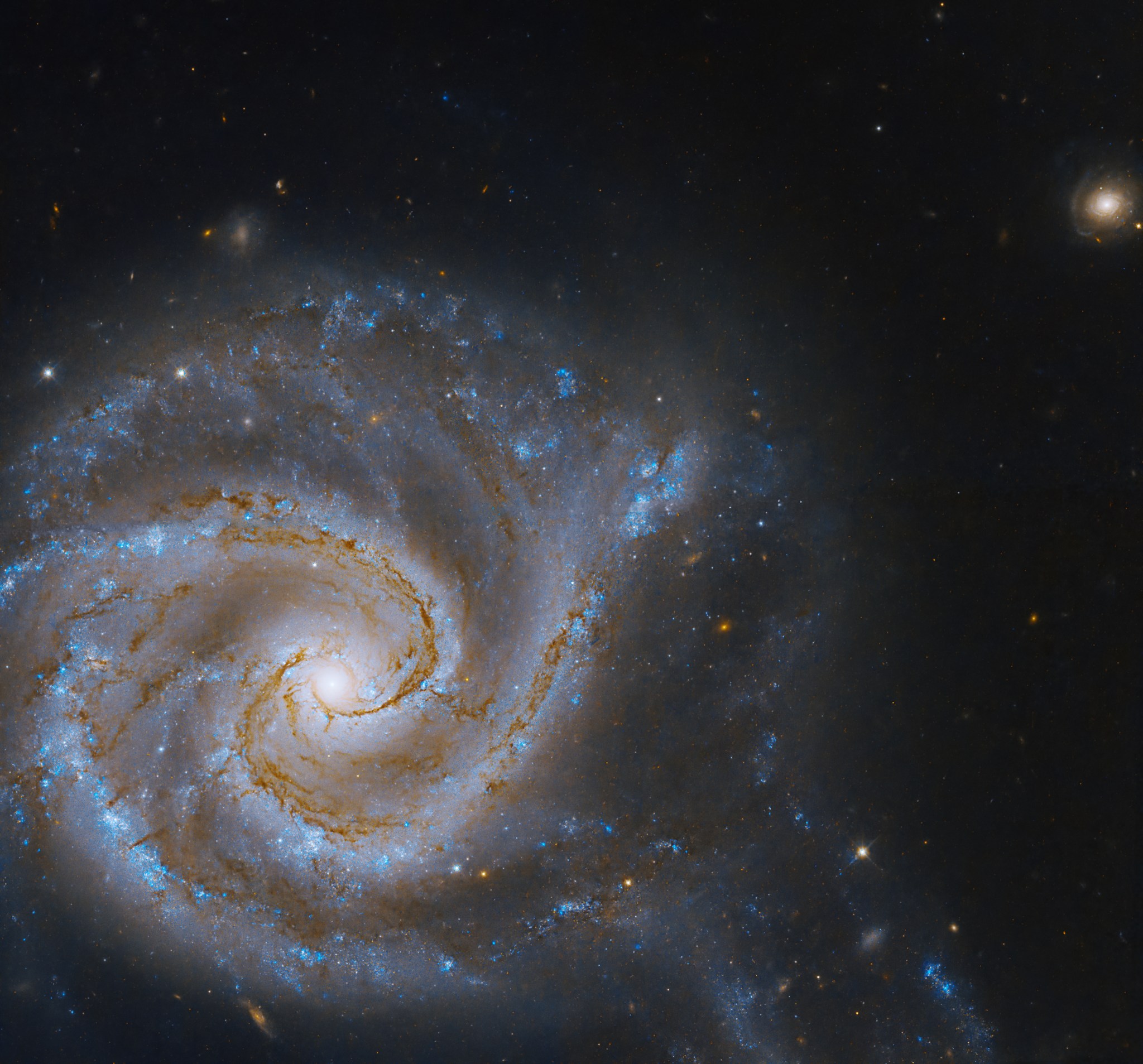
In 1785, British astronomer William Herschel discovered the pair, which is locked in an interaction that will last for tens of millions of years. Whether they will ultimately collide and merge is still uncertain, but their mutual gravitational attraction has already birthed many new stars. These young stars are visible in the faint bridge connecting the two galaxies, located at the bottom of the image. Such a bridge provides an avenue for the two galaxies to continue sharing the gas and dust that becomes new stars.
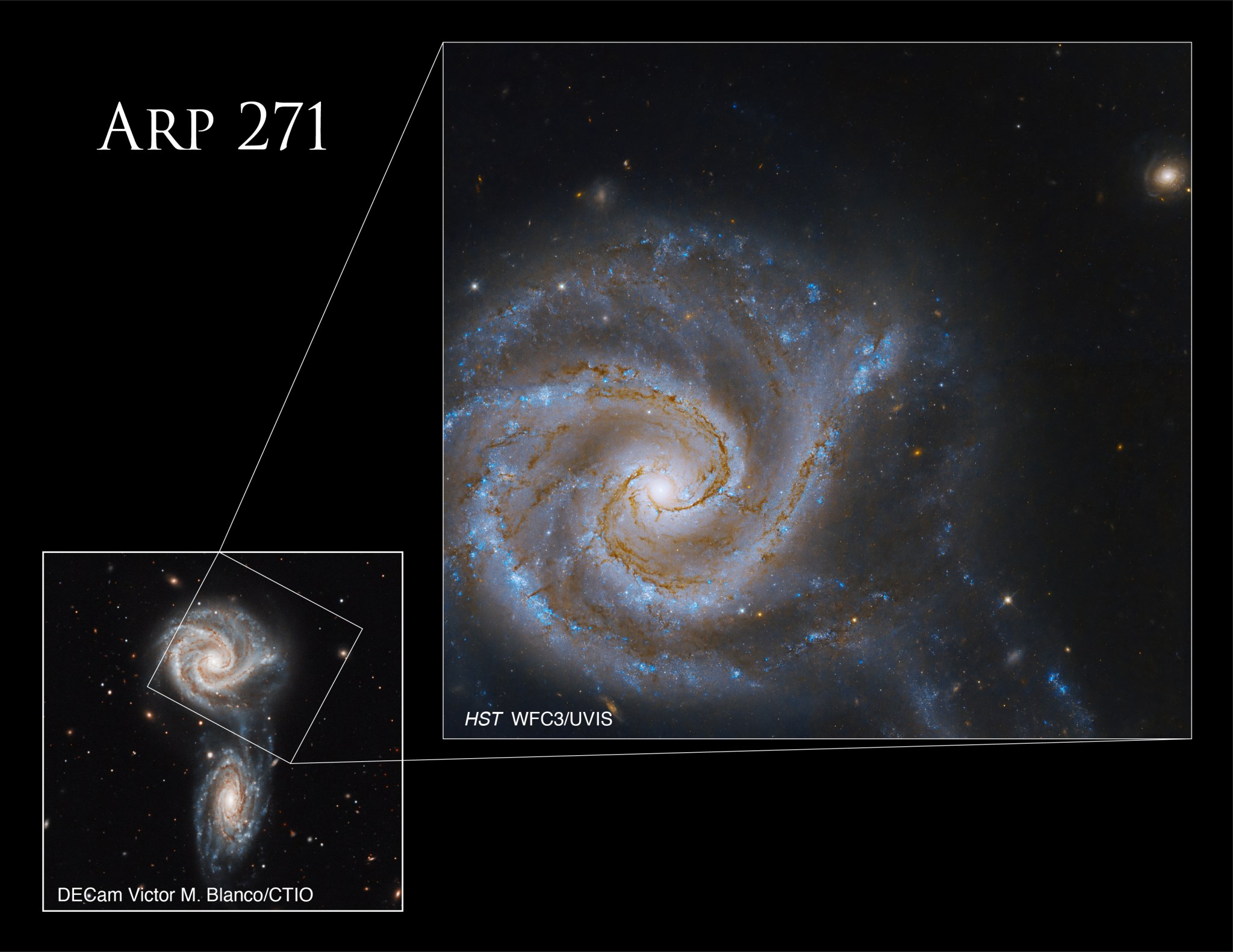
Scientists believe Arp 271 can serve as a blueprint for future interactions between our Milky Way Galaxy and our neighbor the Andromeda Galaxy, expected to happen in about 4 billion years.